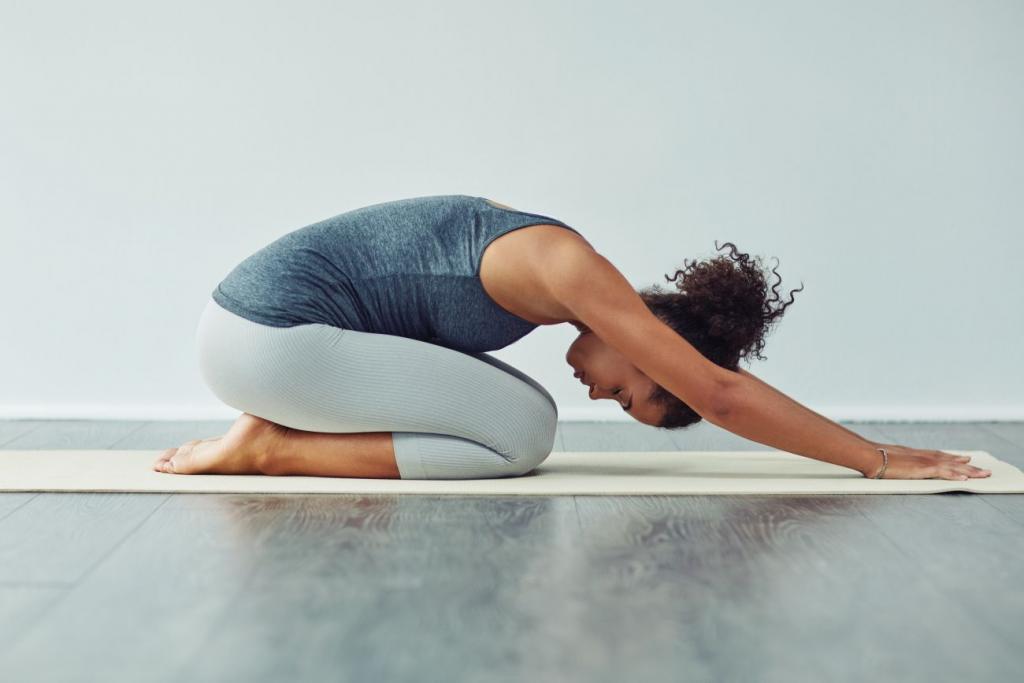If you’ve always wanted to try yoga, there are plenty of reasons you should go ahead and give it a go. With benefits both mental and physical, yoga is a practice that can better you inside and out.
And if you’re a bit intimidated by yoga, there’s nothing to worry about. Yoga is perfect even for the most nervous beginners – and all it takes to get started is your very first class. Here’s everything you need to know about yoga as a newcomer.
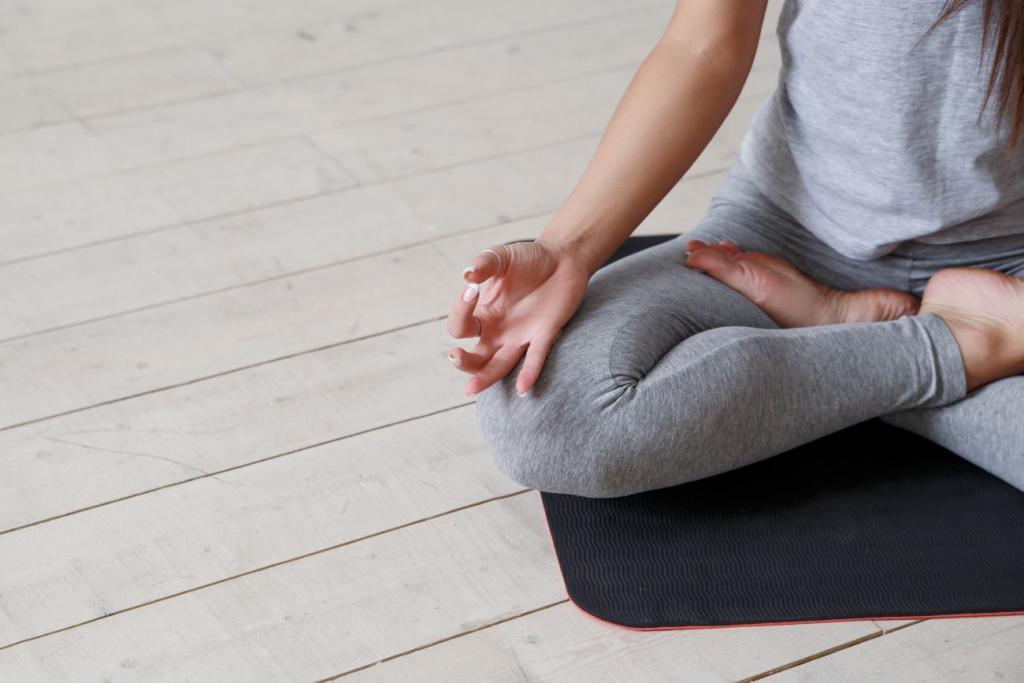
The Benefits Of Yoga
Yoga is beloved by people all around the world, and it has a long and storied history in many cultures. Yoga stems from the Sanskrit word “yuj”, which means to unite, to join, or to yoke. And the union is at the very heart of this form of exercise: according to Ananda.org, yoga is used to unite the physical body to a spiritual realm.
Yoga is as spiritual as it is physical, but you can choose to become as involved in yoga as you’d like. For centuries, people have taken their own approaches to the practice. As Yoga Basics explains, the origins of yoga date back approximately 5,000 years, although there are some researchers who believe yoga actually extends further to 10,000 years.
Over time, many have joined the yoga movement as a way to become or stay physically fit. Still, aside from fitness, there are many that also turn to yoga for grounding, harmony, meditation purposes, and as a stress reliever.
Yoga incorporates both the body and mind simultaneously, which means this form of exercise has a wide variety of benefits. According to the American Osteopathic Association, the benefits of yoga include:
- Boosting energy levels
- Decreasing stress
- Strengthening muscles
- Increasing body circulation
- Improving flexibility
- Decreasing inflammation
- Improving concentration and focus
- Helping with sleep
- Enhancing balance
The Different Types of Yoga
The first step newcomers to yoga need to take is to determine which type of yoga they’re interested in practicing. Although yoga is one tradition and one particular type of exercise, it comes in many different forms. You’ve probably heard of some of the most popular iterations of yoga, like bikram or vinyasa yoga – but ultimately, it’s up to you which type you’re most drawn to.
Here’s a guide to the different types of yoga you might consider.
Hatha
Often used as a blanket term to describe the practice of yoga, Hatha yoga is focused on linking breathing to poses. Hatha yoga classes tend to generally have a slower pace, which requires participants to hold poses longer. Hatha classes are great for expert yogis looking to enhance their yoga experience, as the longer you hang in the pose, the better you sink into it for optimal alignment. Yet Hatha yoga is also great for beginners, as you get to know all the poses well and the slower pace allows you to learn slowly.
Ashtanga
Ashtanga yoga classes are also a fantastic option for beginners. In this yoga practice, you’ll work on the same poses each session, which means you’ll master the first series of poses before you graduate to the next. This is a great class to take if you are a perfectionist who truly wants to nail down yoga poses flawlessly, or if you’d like to ensure your form is perfect while you’re learning all of yoga’s ins and outs.
Vinyasa
Vinyasa yoga offers a far quicker pace than other types of practice. In this version of yoga, the goal is to synchronize movements along with breathing in order to work through the pose series fluidly. Vinyasa yoga is more energetic, with strong movements and a non-stop flow from one series of poses to the next. This is the yoga class to try if you’re looking for more of a traditional workout that will make you break a sweat, versus stretching or meditation.
Yin Yoga
Yin yoga requires holding poses for minutes at a time, with the focus on relaxing and softening muscles in order to focus on outlook and connective tissue. Yin yoga is considered more of a meditation style of the practice, as there’s a lot of focus on holding steady poses. This style benefits one’s mind and muscles as it increases your muscle strength.
Bikram Yoga
For those who interested in a “hot yoga” class, this is your yoga style. Bikram involves two breathing techniques and a series of poses, all of which occur in a room that’s heated to make you sweat. The increased temperature allows you to get a deeper body stretch, but it can also help with chronic pain and acts as a detoxifier.
Kundalini
Kundalini is a very unique form of yoga. In kundalini classes, you’ll experience some intense breathing as well as meditation, along with a little chanting. The idea behind this style of yoga is to elevate one’s consciousness and activate the chakras (or energy centers) in your body.
Tips For Surviving Your First Yoga Class
So, you’ve discovered the benefits of yoga and picked the style you’re most interested – and you’ve found a class you’re ready to try. When you’re ready to take the next step, there are just a few more things you need to learn before you arrive at your local studio.
Before you head to your very first yoga class, here’s what you need to know.
- Wear clothes that allow you to move. Wear clothing you’re comfortable in during your first yoga class. You’ll need to be able to stretch and move easily, with nothing getting in your way. Ensure clothing isn’t too loose, and layer up your top half so you can shed any long-sleeved tops easily while in the midst of a class.
- Bring your own mat and accessories. Yoga mats can be rented at studios, or even borrowed from a friend; however, your entire sweaty body (and face) will be in direct contact with the mat the entire session, so you’ll want to invest in your own. Speaking of sweat, bring a small towel to keep your face fresh during class, and a bottle of water. Mobile devices should be left outside the room during your yoga session.
- Arrive early. It’s customary to show up to yoga class about 10 to 15 minutes before it begins. After all, the practice of yoga is all about calming down, having a deeper focus, and de-stressing. The last thing you want to do is rush into your first class, frazzled, and feeling on unnerved. Showing up early allows you time to set your spot up, take in your surroundings, and familiarize yourself with fellow classmates.
- Expect close quarters. While you might have plenty of room to spread out in other exercise classes, you may wind up closer to your classmates in a yoga class. Depending on the studio, you’ll be placed very close to your fellow yogis. It’ll feel weird at first, but once you get rolling, lack of space will become a non-issue.
- You’ll need to remove your socks. Yoga is done barefooted, so leave your socks in your shoes before entering the studio. You’ll slip on your mat’s grippy surface if you keep your socks on.
- There may be chanting. Some sessions start and end with chanting “om.” The Sanskrit word helps to unite energy and bring sacredness into the class. You can choose to join in or stay quiet during your first class.
- Sanskrit or English pose names could be used. Speaking of, as you start forming poses and transition into moves, the instructor may refer to postures by their Sanskrit names. At times, some teachers use the English versions, which you may be familiar with (i.e. Downward Dog, Child’s Pose, etc.), but hearing some of the yoga lingo during that first class may having you feeling like you’ve jumped into an alternative universe. You may be a beginner now, but you’ll come to get to know these terms over time.
- Expect to need adjustments. Don’t get taken aback if your instructor asks you if you want to be adjusted during the session. While these adjustments may seem awkward, they’re actually an excellent way to enhance your alignment or place you deeper into a pose – and your instructor may even correct your pose. Having said that, if you don’t want to do this, which is understandable, simply give the teacher a “no, thanks, I’m okay”, and the instructor will move on.
5 Yoga Poses to Practice at Home
Wish you could take a yoga class, but can’t find the time, nor the extra cash? Below are five simple and easy yoga poses you can do in the comfort of your own home.
Downward Dog
- In a kneeling position, place hands under the shoulders, spreading fingers wide.
- Tuck toes under and use abdominal muscles to push the body up off the floor/mat, so only feet and hands are touching the bottom.
- Press through the hands, gently moving the chest to the thighs and heels to the floor.
- Relax the neck/head, and breathe.
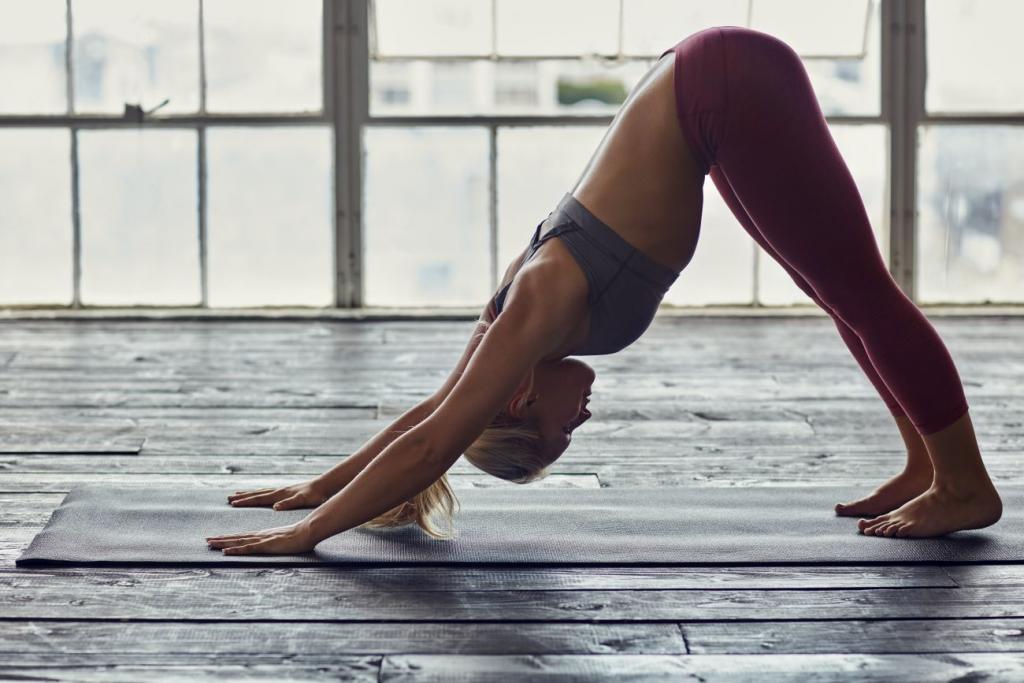
Crescent Lunge
- In a stand position, place the ball of the left foot to the back. Ensure feet are slightly wider than each other.
- Reach both arms overhead (straight), bending the right knee to a 90-degree angle
- Relax shoulders, and continue reaching upward, lengthening the back leg.
- Hold the pose for half a minute, and switch sides.
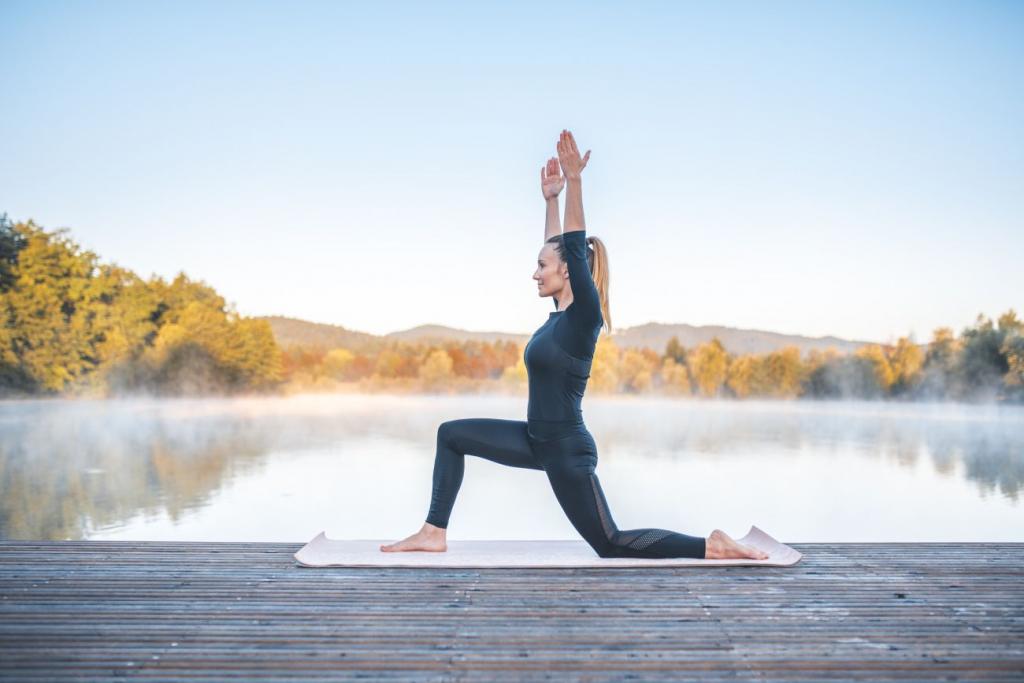
Happy Baby
- On your back, grab the big toe with middle and index fingers.
- Draw toes down gently, and pull knees towards shoulders. Keep knees open and elbows pressed.
- Hold for half a minute, breathe, and relax.
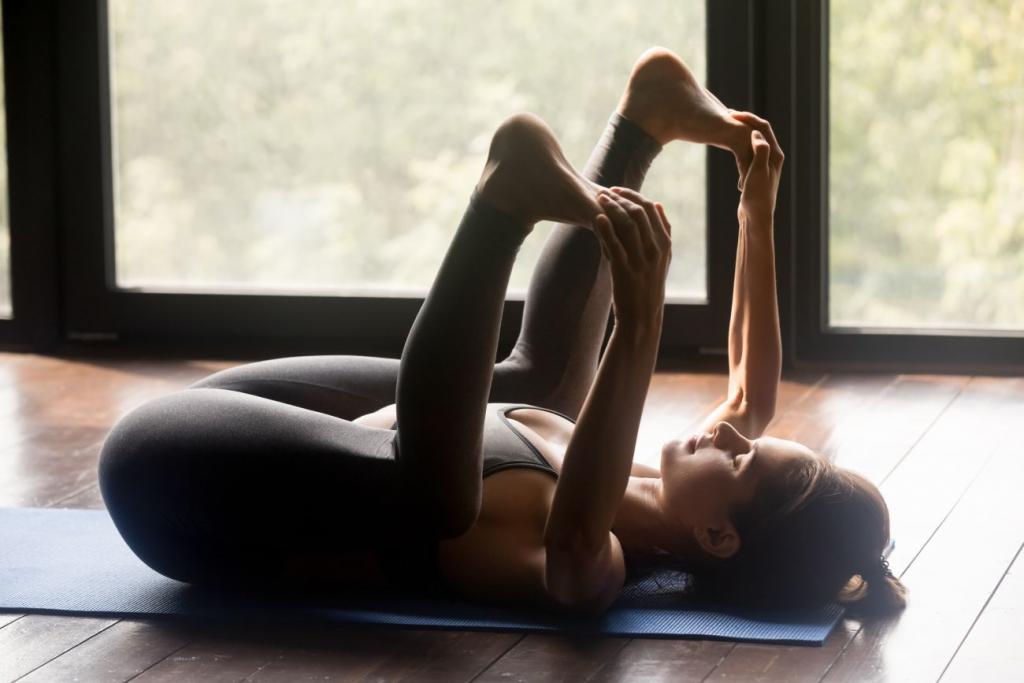
Yogi Squat
- On your feet, crouch down, with tailbone between ankles, and place hands in a prayer position at the chest.
- Press hands firm, while pressing elbows against inner thighs.
- Hold for half a minute, breath, and relax.
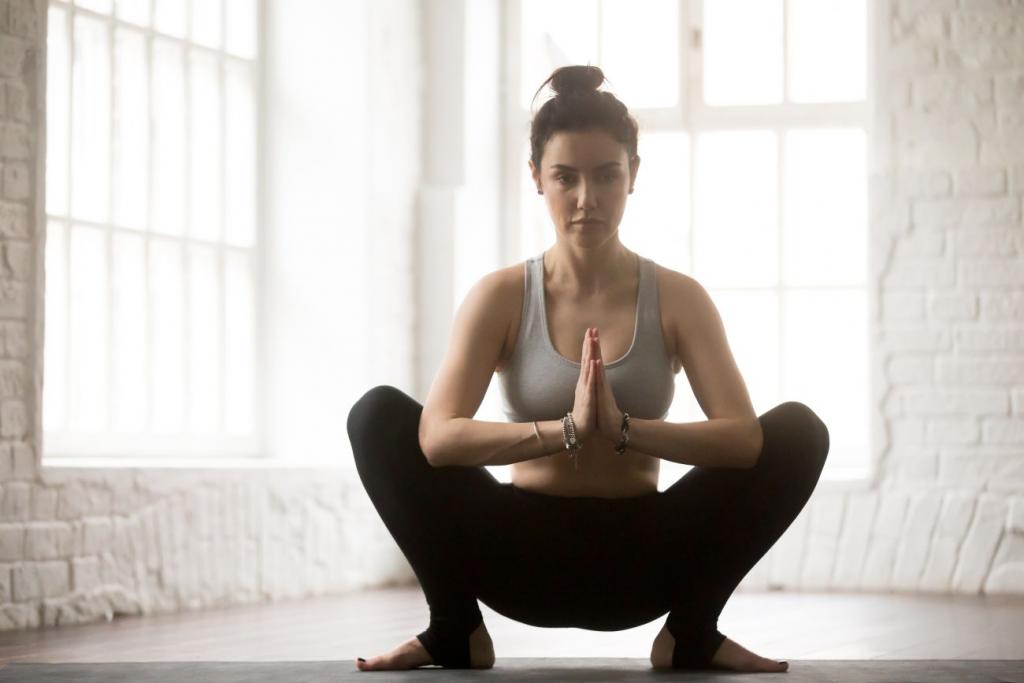
Child’s Pose
- Start on your hands and knees. Spread your knees apart, keeping your big toes touching.
- Lower your torso, extending your arms in front of you. Let your head rest on a pillow or yoga mat.
- Hold the pose for as long as you wish, taking deep breaths.
